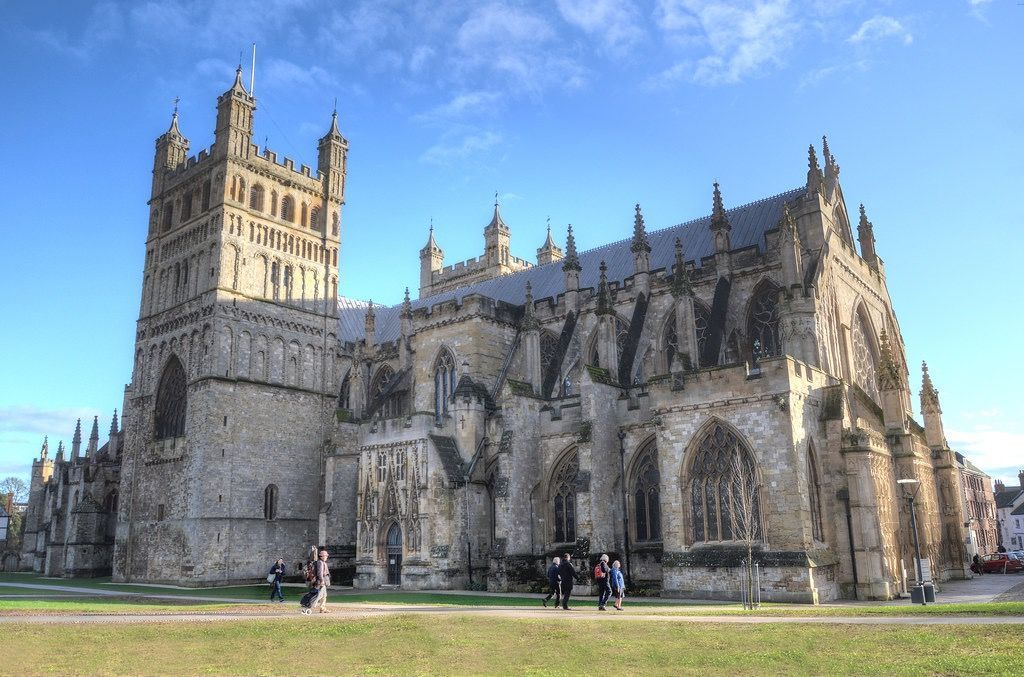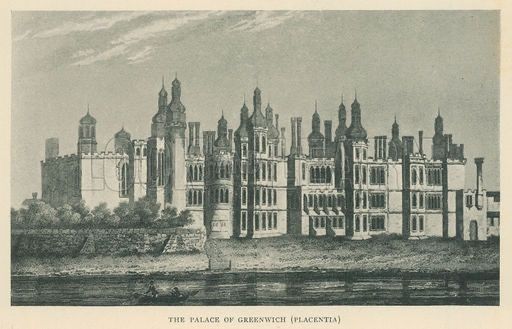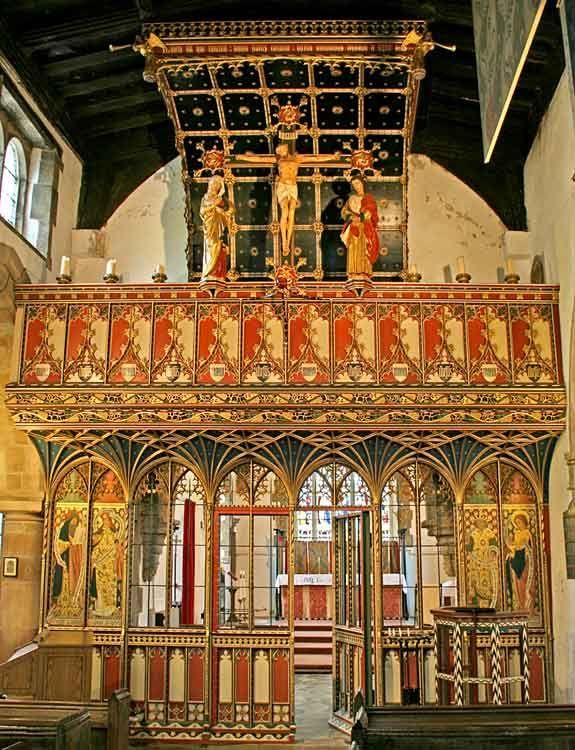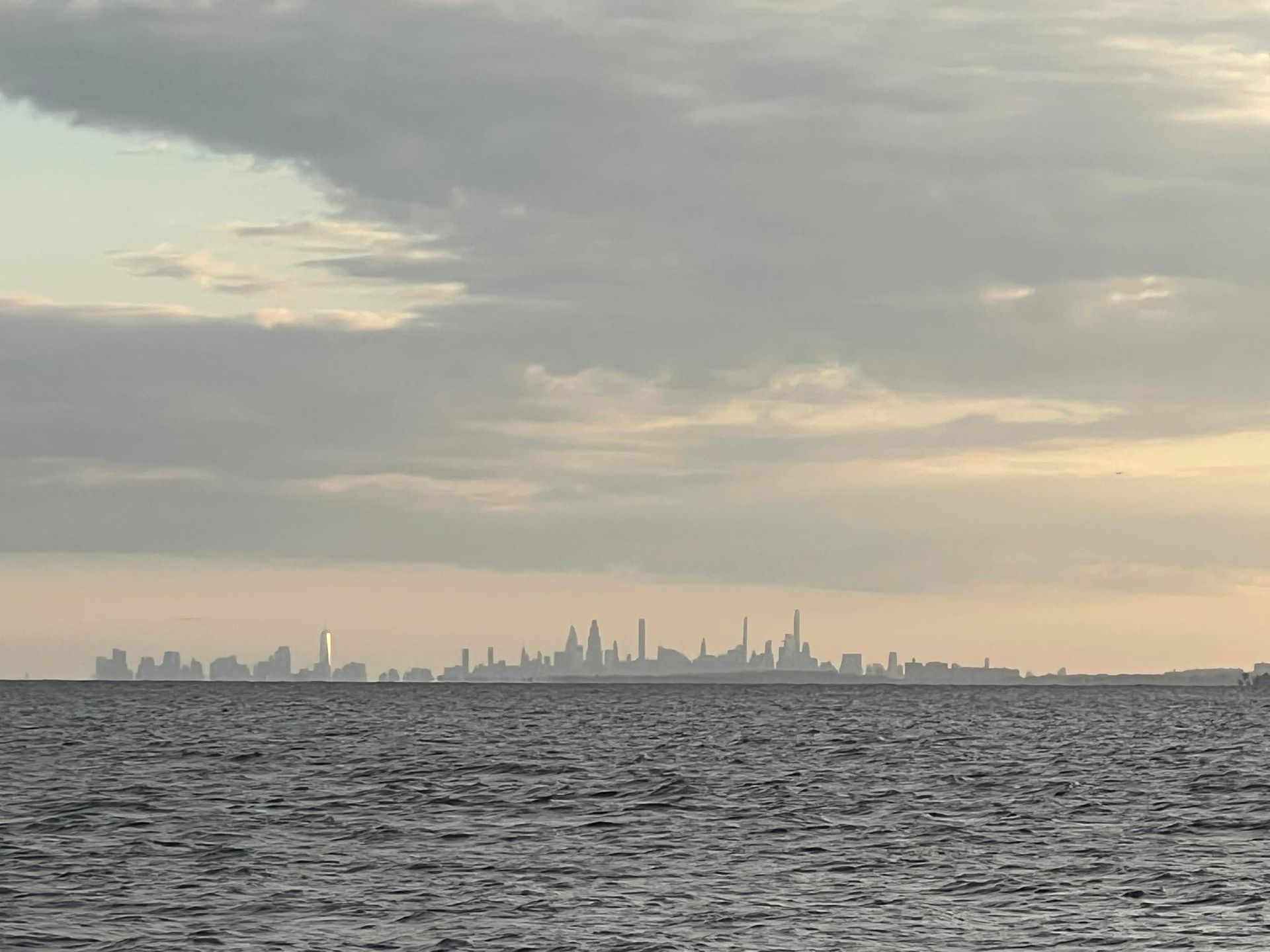A Priceless Sacrament
Rev. Michael J.V. Clark • November 16, 2025

Have you ever seen the 1996 Disney version of The Hunchback of Notre Dame? I suspect moms and dads have. It’s based on a novel by Victor Hugo about a poor unfortunate bellringer who spends all his time in the great cathedral, so much so he makes friends with the bells, the statues and even the gargoyles. In the film version, with creative license, the gargoyles even speak - but the idea is that Quasimodo (named after the liturgical Introit of Low Sunday) has such an affinity with the building that it spoke to him; it has personality. It communicates.
This idea resonates with me personally - I spent my earliest years darting in and around one of the great cathedrals of England. A building begun in the Twelfth century, still standing sentinel more than 800 years later. I remember swinging down the spiral staircases using the rope, exploring the vast forest of the high roof with its massive oak beams, playing chase around the flying buttresses, and even noticing how cool the stones felt on a hot summer’s day. The cathedral spoke to me, it has personality. It communicates.
I would not be a priest today if that building didn’t speak. I would never even have become a Catholic. But in language that uses not one single word, the building told me of the most precious thing in my life: the Sacrament of the Body and Blood of Our Lord and Savior, Jesus Christ. It is not simply a convenient gathering hall, but instead, it unfolds the mystery of the Eucharist, layer upon layer, until you reach the High Altar beneath the vast East window. Entering the building is to begin a pilgrimage, where the final destination lies beyond this life, into eternity.
This building was (and is) so significant to the life of the diocese that it has its own feast day - the Feast of Dedication - in the case of Exeter Cathedral, it is November 21st, but our own cathedral in Bridgeport also has a Feast of Dedication - December 2nd, and today, we celebrate the Feast of Dedication of a cathedral thousands of miles away in Rome - the Archbasilica of the Holy Savior and Saints John the Baptist and Evangelist in the Lateran. The pope’s own cathedral church.
“But buildings aren’t important, Father, it’s the people who are important…haven’t you read Vatican II?”
In the gradual of the Liturgy of Dedication, Locus iste, a text memorably set to music by Anton Bruckner, there is an extraordinary phrase. It describes the holy place as inaestimabile sacramentum. The words are close enough to English to know immediately what they mean: a priceless sacrament. It is true that Lumen gentium of Vatican II emphasizes, using Biblical themes, the idea of the people of God being God’s Temple, built of living stones; that the Church is more than just buildings, but is the living network of communion between souls. Absolutely!
But remember this emphasis rests on an assumption - an assumption that Catholics would always build beautiful churches. When Lumen gentium was written, the Church needed to hear the emphasis on the people of God, a reminder that we are indeed the Body of Christ - because, perhaps, this was lost in the sumptuary of the gilded baroque. But we must always remember the most important Catholic word, ever: AND. We are living stones and we have beautiful buildings - the reason being humans need more than just words about God, we need transcendent experiences of God, in our time and space, to fully appreciate how much he loves us.
In this way, buildings themselves are priceless sacraments. They look like one thing - but they in fact quite another. It may look like a pretty structure, but what it is in fact, is what Jacob realized in his dream: “none other than the house of God and the gate of heaven.” You will recall in his dream he saw a ladder connecting heaven and earth, with angels ascending and descending. Not just a building, but a sacrament - what it is on the outside is nothing compared to the inner reality.
Vatican II refocused the Church building on its most important feature. I wonder if you can identify what that is. It is, of course, the Altar, the place where the Sacrifice of Calvary is made present in our midst, where heaven and earth are joined. The first rung of Jacob’s Ladder, no less. Right here in front of you. That’s the reason I refuse to allow the Altar to be hidden by anything - flowers, decorations - anything. It must always be the clearing in the woods, because it is the launchpad to Eternity.
But the church building is also a priceless sacrament in another way. When Moses discovered the burning bush in the desert, God commanded him to take off his shoes because it was hallowed ground. We Christians used to do that (some still do) when we entered any church building - it’s important to adjust our behavior when we enter a church, otherwise by treating it like any other space, we chase away the quiet voice of the Spirit who wishes to speak to us in our hearts.
But in the burning bush, God revealed something to Moses that is easier to understand in Hebrew than in English. In revealing his name to Moses, I am what am, God did more than give Moses a moniker, a label - he communicated to Moses that he wanted to be discovered. I am what am also means I am found where I am found. The Name of the Lord is more than an existential reality - more than the Greek idea of essence ‘to be’ but is relational - God is a God who desires to be found, and will be found in a place of his choosing, not ours.
In Zip code 06831, two thirds of which is our Parish, there are three places where God desires to be found, because there are three Altars - St. Paul’s, St. Timothy’s Chapel, and Sacred Heart Convent. Here is the most important, because here is the Parish Church, the focus for all the souls in our territory. This unusual building is the burning bush of West Greenwich, always alight but never consumed. It is holy ground, and a physical reminder to all passers-by — whether they enter or not - that God can be found, and more importantly, desires to be found.
Recent Posts










